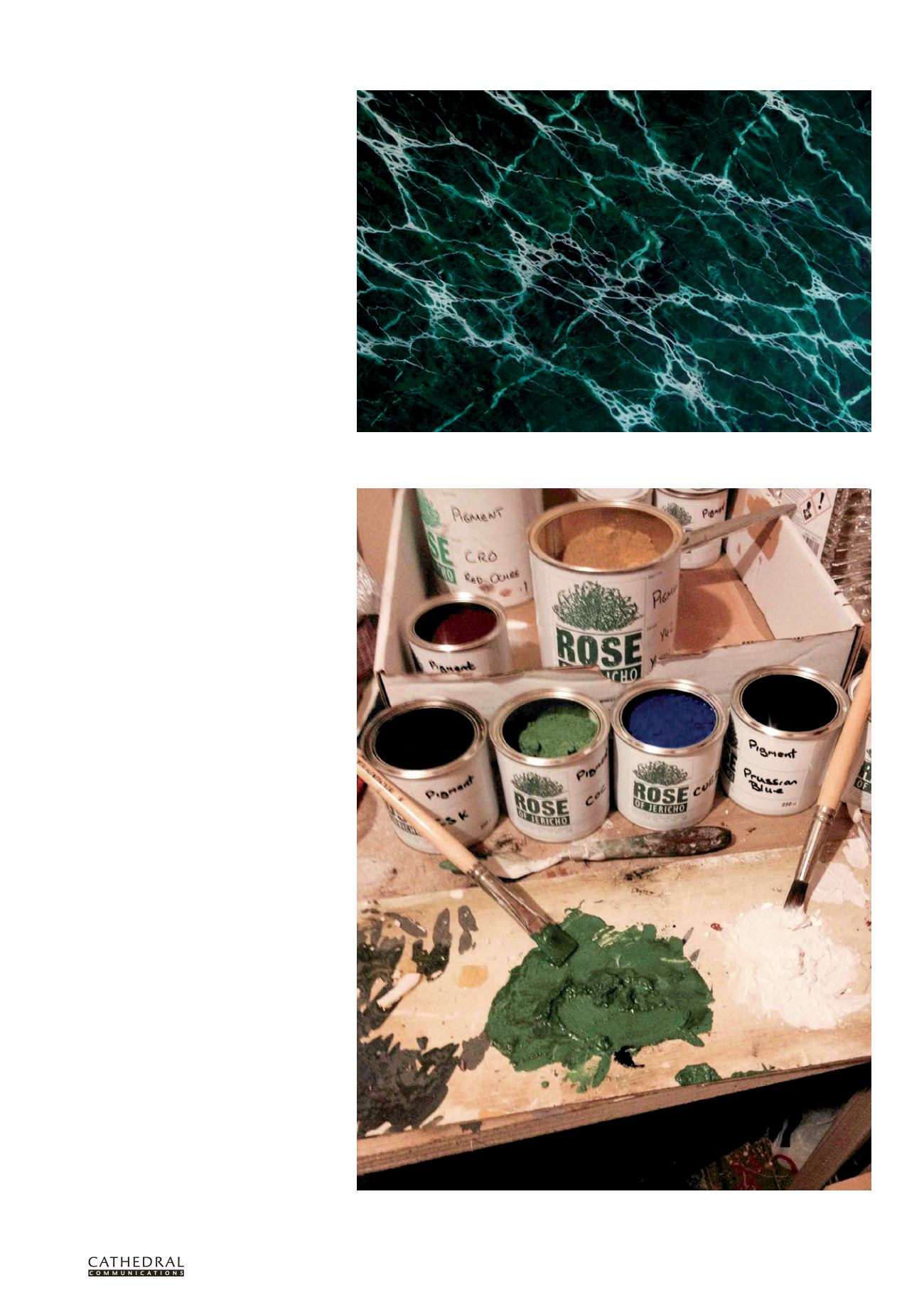

T W E N T Y S E C O N D E D I T I O N
T H E B U I L D I N G C O N S E R VAT I O N D I R E C T O R Y 2 0 1 5
1 6 7
INTER IORS
5
applied to give the desired transparent
tint and to make subtle enhancements to
the design. The glazing layer was further
worked with additional diluted paints. It
could also be partially wiped out with a rag,
a
‘
veining horn
’
(a rolled soft leather cloth
or a piece of wood with a rounded end) or a
natural sponge to modify its appearance.
Binding media
In common with both 19th century
architectural painting practice and easel
painting techniques paints for marbling were
made from pigments ground into a drying
oil and diluted with turpentine. Normally,
linseed oil was used as it was capable of
forming a relatively quick drying and strong
paint film, especially in combination with
siccative pigments, such as lead white.
Victorian treatise recommend, again as was
common practice, the addition of a little
boiled oil or driers if slow drying (non-
siccative) pigments, such as mortuum caput
or vine black were to be used. Some authors
suggest the use of poppy oil with white
pigments such as zinc white, as it was less
prone to yellowing than linseed. However, in
well-lit rooms or exterior work, linseed oil
was recommended as best for all whites as it
formed more durable paint.
Water colour may also have been exploited
to produce effects not easily obtainable in oil,
often in the preliminary stages, and the work
completed in an oil medium, with perhaps a
final glaze in watercolour.
Pigments
The pigments used were those generally
available to the Victorian artist, while sensible
economies were made in order to respect
the size of
faux
marble panels to be prepared
and the consequent costs. For example, in
recommending pigments for
Br
è
che violette
Van der Burg lists zinc white, black, ochre,
chrome-orange, red
mortuum caput
(a
purplish iron oxide), ultramarine blue and
organic red lake pigments. He goes on to say:
The painter knows very well that lake
fades away by a strong light and that
the colour which is of great importance
in this marble should be durable. We
therefore advise to paint a work, which
is much exposed to the sunlight, with
caput mortuum as much as possible,
and to use the fading (organic lake)
colour as little as possible, though it
cannot entirely be dispensed with
…
Varnishes and waxes
Varnishes were applied to intensify the
appearance of the paint layers and to provide
a degree of protection to the delicate surface
finish. By the 19th century spirit varnishes
produced by dissolving tree resins, such as
dammar or mastic, in solvent were widely
used. Traditionally varnishes are clear,
however, their appearance can be modified by
the addition of pigments and other materials.
The inclusion of wax, for example, produces a
less glossy varnish film. Natural waxes were
also used to give a saturated polished look to
marbled surfaces.
A recently painted example of marbling in imitation of green
vert de mer
marble, which owes its name to the
form of its veining which suggests the waves of the sea. This was an expensive marble and was often imitated
during the 19th century.
Dry pigments are ground into linseed oil to form a paint paste that is then diluted with turpentine for application.
















